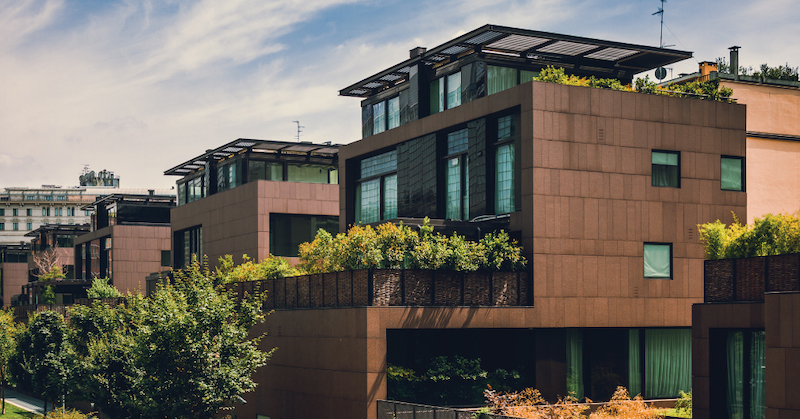Changing consumer behaviour, technology and sustainability are defining the way residential real estate is evolving. Listed below are the key trends in residential real estate for 2022 in Bengaluru:
What is happening in Residential Real Estate?
1. Larger unit sizes
- The work from home mode will continue and most of the companies will continue to operate using hybrid working models. People today are spending more time at home as against the pre-COVID-19 period. There is a need to have an exclusive space – may it be for a home-office, a classroom, or a space to pursue hobby.
- Since 2021, residential projects have witnessed substantial absorption as well as enquires for larger unit sizes. The 2 BHK demand has gradually made way for 2.5 BHK [1,400 – 1,500 sqft] from the previous size of 9,00 – 1,200 sqft and the preferred 3 BHK sizes have expanded to 1,800 – 2,200 sqft as compared to earlier sizes of 1,400 – 1,700 sqft.
- Indians today are relying more on machines than ever before. Increase in purchase of whitegoods like dishwashers and robotic floor cleaners have led to a need for a larger utility space; storeroom with a separate bathroom for the domestic help are a value-add.
2. Pre-fitted furniture
- Compact housing or demand for smaller units [660 – 950 sqft] with a ticket size of INR 25 L – 60 L are preferred with pre-fitted flexible furniture.
- Flexible furniture ensures fluidity in space – moving walls and fold-able bed with study tables allows the space to be used differently during daytime and during night. Pre-fitted furniture largely includes modular kitchen, wardrobes, fold-able bed with study tables, expandable dining table, sofa-cum-bed, and in-built storage options.
3. Home Automation Features
- Developers are offering increased home automation features in a residential development.
- The use of Radio Frequency Identification (RFID) doors to access common areas – clubhouse, terraces, and basement parking within a premium (ticket size INR 1.25 CR – INR 1.75 CR) residential project is in trend. Home security solutions – theft alert, gas leak detection and panic button (for emergency use) are also provided by the developers.
- Luxury residential projects (priced at INR 2.5 CR and above) are witnessing elaborate home automation systems including –
- long range RFID for car video communication between the apartment and visitors,
- Lift control panel – biometric access / code access to the floor,
- Complete High-Definition Multimedia Interface (HDMI) solutions enabling high-performance signal management & media distribution
- Options of scene setting in lighting
- Curtains with one-touch operations
4. Third Party Applications for Operations & Management
Digital platforms like MyGate, No Broker Hood, Adda, and Apna Complex create a simplified ecosystem to conduct essential community management activities. These include visitor access management, internal communication, and common area maintenance, among others.
- There are management service platforms namely Urban Clap and House Joy. Resident Welfare Associations (RWA) are executing a contractual agreement with these companies to ensure the regular property upkeep as well as update on the property condition to the owners.
5. Clubhouse inclusions
- The clubhouse along with gymnasium, swimming pool and other features is making way for a co-working space and guest rooms. Inclusion of a clinic and a convenience store within the premises has already seen a penetration.
- End-users today are preferring a project wherein the Clubhouse is also functional at the time of receiving Occupancy Certificate (OC).
6. Electrical Parking Points and Mechanical Parking
- Keeping in mind India’s mission of meeting its 2030 Sustainable Development Goal (SDG) targets, Electric Vehicles (EVs) will be the new commuting standard in future. Accordingly, charging points for EVs within the residential premises have become a mandate. Also, car ownership per household is increasingly swiftly making automated parking systems a differentiator.
- Dedicated parking for bicycles is being considered to promote alternate transport
7. Pet-friendly Features
- Apartment projects with land area exceeding 5-acres are likely to accommodate parks and play-areas for pets.
8. Connectivity points to facilitate e-commerce
- In the case projects are located on the outskirts of the city where major e-commerce delivery is not available, the developer needs to offer regular conveyance from the project to the nearest e-commerce point.
What are the likely future trends in Residential Real Estate?
1. Urban Agriculture
- Eating fresh, healthy, and local food has been the new mantra. Developers are likely to allocate a small patch of land towards community garden within large apartment projects (more than 5-acres). However, this requires significant efforts from statutory standpoint. As of now, it is mandatory to relinquish 5% of the total land area in projects more than 5-acres towards civic amenities to the Government. Urban agriculture in that land can be promoted on the Government land wherein the RWA is responsible for farming on that land; the produce of the same can be sold to the residents as well as outsiders. Also, in case of a villa or a gated community, urban agriculture can be promoted along the main streets of the development or in proximity to the clubhouse or other common areas.
2. Proptech Applications
- Many more Proptech applications are likely to be incorporated for example usage of motion-based sensors in common areas like gymnasium and squash or badminton courts.
- Sensors will be used in utility equipment and data management will be enhanced through recording critical real time information supporting efficient operation management.
3. Green Building Certification
- Developers are also considering IGBC Green building certification for the projects.
- Well-being is gaining focus and initiatives like usage of low Volatile Organic Compound (VOC) paints by the developers to ensure healthy lifestyle.
4. Elaborate waste segregation
- As of now, there are only two categories of waste segregation – dry waste and wet waste, however in near future, developers are likely to consider segregation of recyclable waste, sanitary / medical waste, and rejects as.
5. Use of Renewable Sources of Energy
- Harnessing solar energy has been restricted to the bare minimum statutory requirements; there is significant scope in implementing the same in residential developments. Strategic use of solar panels can significantly reduce the electricity consumption for common area lightings.
There has been a significant change in our lifestyle since the past two years. Homes, today, are a working office, an extended classroom and a chef’s cooking pad. The future target audience are health conscious, tech-savvy and environment friendly generation as compared to the previous generations. Real estate enables how we live, work, learn and play; it will be crucial for the developers, architects, and investors to design the future residential spaces considering the preferences of the target audience.

